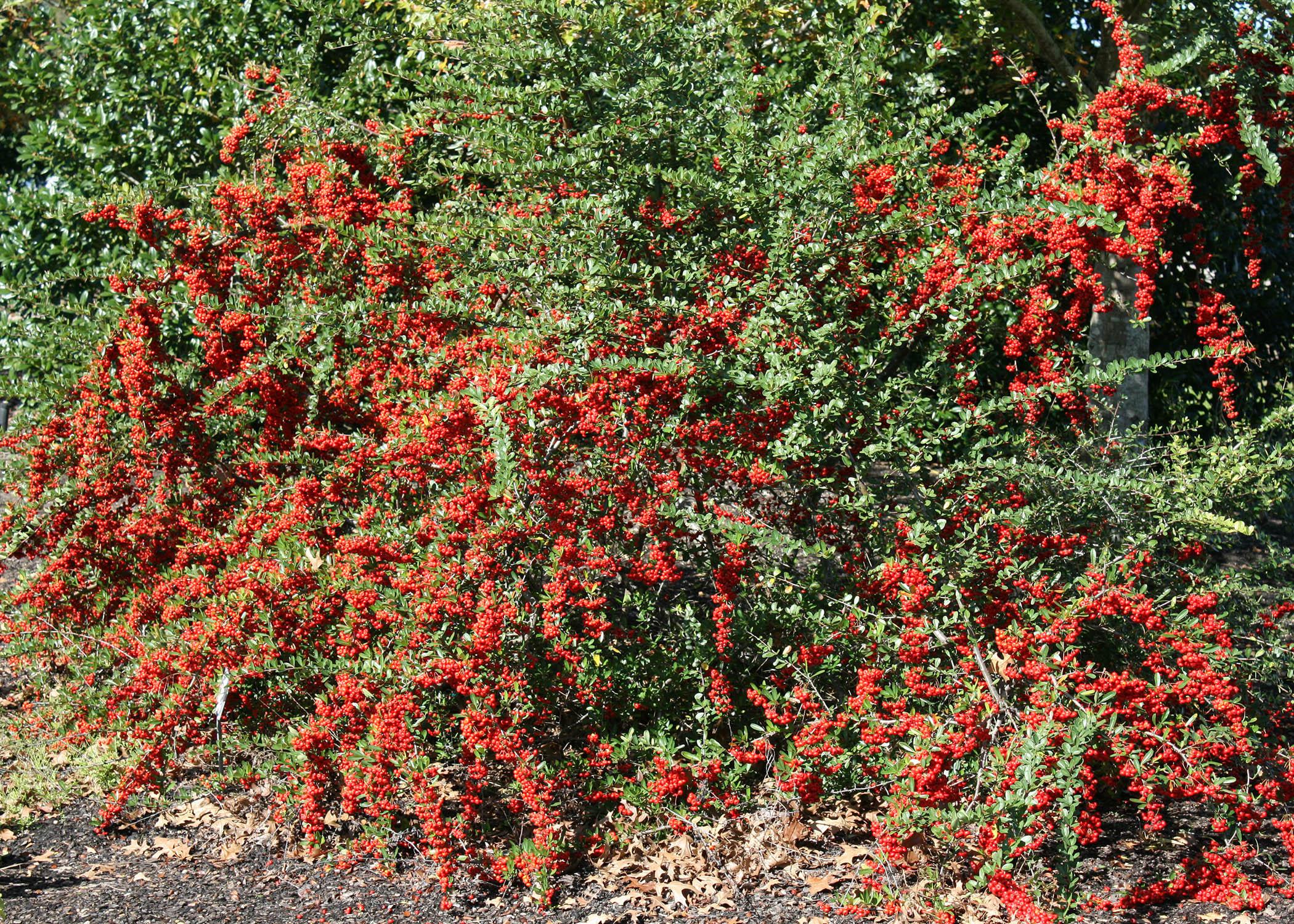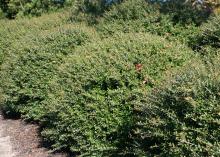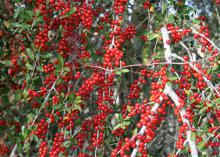Information Possibly Outdated
The information presented on this page was originally released on November 22, 2013. It may not be outdated, but please search our site for more current information. If you plan to quote or reference this information in a publication, please check with the Extension specialist or author before proceeding.
Bushes with red berries offer winter garden color
Fall weather is always a treat because some of the plants that provide summer backgrounds step up and show off their stuff.
I’m not talking about flowers, although there are several plants that bloom in late fall and early winter. I’m talking about the landscape shrubs and small trees that put on dazzling displays of red berries. What can be more appropriate heading into the holiday season?
One of the most obvious is pyracantha. This shrub is popular because of its abundance of red berries that seem to drip off the branches in heavy clusters. Sometimes the berries seem to be on the interior branches because they are borne on the previous season’s growth.
When this shrub is grown near a solid wall, try to manage it with a method called “espalier.” In other words, train the plant to grow in a flat plane against the wall. Planted under windows, this shrub can deter would-be burglars with sharp thorns on almost all the branches. No wonder the common name of pyracantha is fire thorn.
Few people know that pyracantha is a close relative of the apple tree. Its fruit is edible and can make a fine apple-like jelly.
Driving around Mississippi right now, you can’t miss one of the finest native hollies putting on a show. The yaupon holly, Ilex vomitoria, seems to be everywhere. From its botanical name, can you guess what native people used it for?
Its extreme berry production makes this plants pop out of the woods. Berries are bright, candy-apple red and seem translucent. They color up at exactly the right time of year to be perfect for homemade Christmas wreaths and decorative garlands.
A couple of interesting yaupon holly selections are landscape-worthy. Weeping yaupon can grow to about 12 feet high, and its branches have a weeping, cascading growth habit. In their native setting, yaupon holly can grow to 20 feet or more, which presents difficulties in some landscapes. A dwarf selection called Schillings Dwarf is slow growing and perfect for landscape planting. It tolerates pruning but does not bear significant numbers of fruit.
A hybrid holly that is a wintertime favorite is Nellie R. Stevens. Its leaves are a dark, glossy green year-round, and it grows in a nice, triangular shape. But its real attraction is berry production. It literally produces thousands of brightly colored red berries.
Nellie R. Stevens has the potential to be a big plant, up to 20 feet tall and wide. It is tough and durable and accepts pruning to keep it under control. But the best practice is to plant it in a space that will accept the growth potential and prune to merely maintain the pyramidal form.
As with all landscape plants, success begins with preparation.
Always dig the planting hole at least twice as wide as the container or root ball, but always the same depth or a little shallower. Research has shown that keeping the crown of the plant 1 or 2 inches above the surface grade gives it a better chance of survival in the landscape. Follow planting with an inch or two of mulch to conserve moisture.
Besides adding beauty to our landscapes, plants that produce berries play an important role as a winter food source for wildlife. They also providing habitat for nesting.










